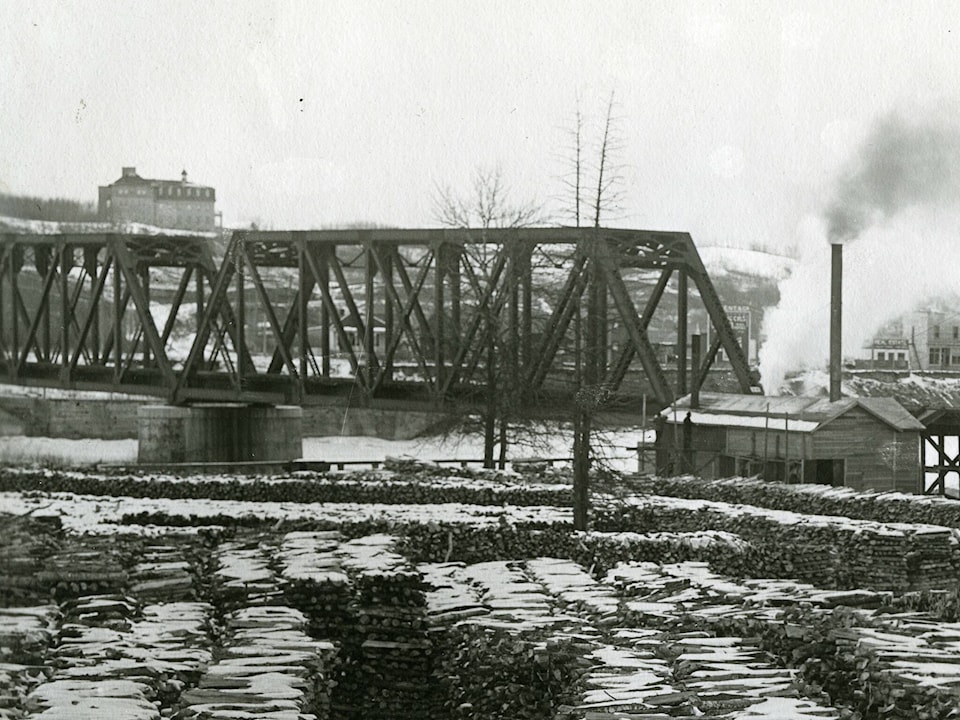1904 was a banner year for the booming Town of Red Deer. The population surged as large numbers of new settlers poured into the district. New houses and new businesses sprang up. Six major utilities and public services commenced in the community – a hospital, court house, fire department, waterworks, local telephone service and electric lights.
The provision of local telephone service and electricity were closely intertwined. The first moves towards securing both started in December 1902 with the incorporation of the Western Telephone Company. The official objectives of the Company were to “furnish and provide street lighting, telephone service and electrical equipment capable of furnishing light and power as may be required for municipal, industrial, commercial and domestic purposes”.
The primary promoters of the Western Telephone Company were John T. Moore and his two sons, J. Carlyle Moore and William Addison Moore. Billy Moore had been trained as an electrical engineer at Harvard. In 1901, he was elected as a councilor on Red Deer’s first town council. In 1902, he resigned from Council and went to Chicago to get some practical experience in the power company business, first with Edison Electric and later with the Fairbanks Morse Company.
In 1903, the Company secured a 25-year franchise agreement with the Town, which included permission to use streets and lanes for the erection of telephone and power poles and the connecting lines. In exchange, the Company was to provide light “equal in every respect to that now supplied in any city or town in the North West Territories” [Alberta and Saskatchewan]. Moreover, the service was “to be such as to give a steady light without undue flickering, hissing or fluctuation”. There were to be six arc lamp street lights “and as many more as the Town may from time to time require”.
Later in 1903, the Town agreed to give the Western Telephone Company an exemption from local taxation.
In the early summer of 1904, work began on a powerhouse next to the C.P. railway bridge across the Red Deer River. Power was to come from steam generators fired with poplar wood, a rather inefficient way of creating electricity. Nevertheless, the Company promised that “the equipment will be of the very finest” and that the “lighting system will be much ahead of the stipulations in the agreement with Council to extend the usefulness and efficiency of electricity.”
Work also began on a brick, two-storey office block on the west side of Gaetz Avenue, south of Ross Street. The light and power operations were on the ground floor with the telephone exchange located on the second floor.
Following the decision by the Town to proceed with the installation of a
waterworks system in the fall of 1904, another agreement was made between the Town and the Company to install the necessary water pumps at the power plant and to generally manage the supply of running water.
Meanwhile, in order to help secure new sources of funding and investment, the Western Telephone Company was reorganized as the Western General Electric Company. Some wags joked that while the East had Western Electric and General Electric, Red Deer was now in the vanguard of progress with the Western General Electric.
On Halloween 1904, the powerhouse was finished and the first electric lights in Red Deer were turned on. That afternoon, Mayor Edward Michener assisted with the installation of the first water pipe, at the corner of Gaetz Avenue and Douglas (55) Street, a short distance to the east of the Western General power plant. The telephone system became fully operational a few weeks later.
In the words of a local reporter, “to look along the streets now and see the poles, wires and trenches for waterworks, gives the Town quite a metropolitan appearance”. Red Deer was coming of age.
Michael Dawe is a Red Deer historian and his column appears on Wednesdays.
